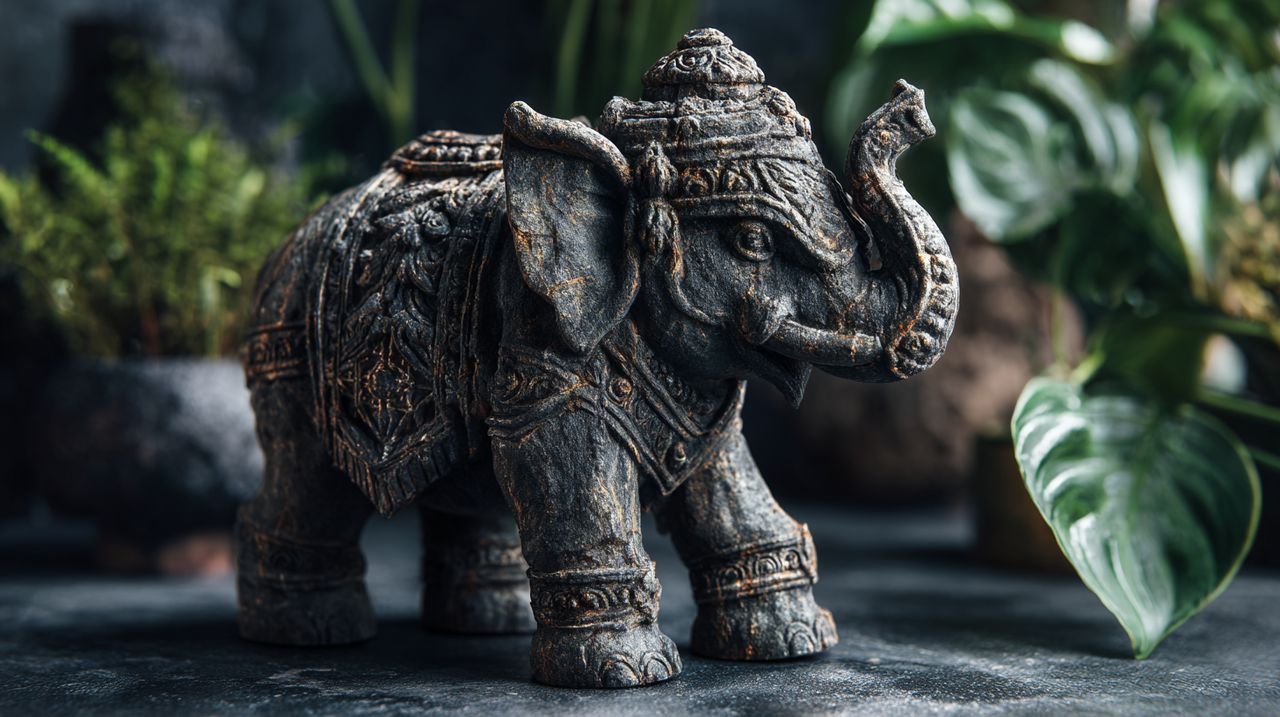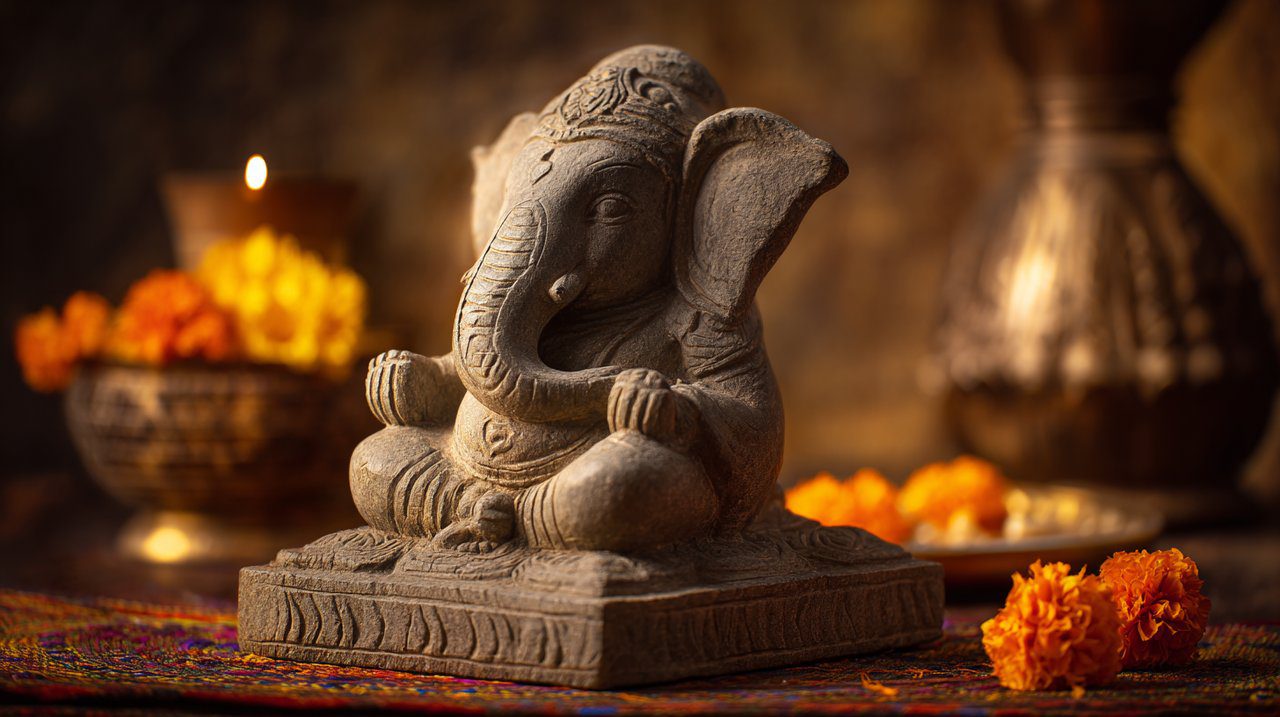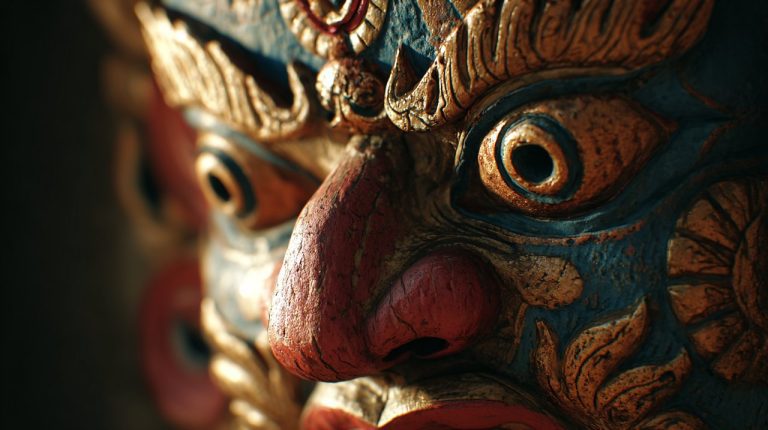The Stone Sentinel: Unpacking the Enduring Meaning of Elephant Statues Across Cultures
The silent majesty of an elephant in stone often evokes an immediate sense of permanence and ancient wisdom. From the colossal temple guardians of Angkor Wat to the delicate jade carvings gracing private collections, these sculpted pachyderms transcend mere decoration. They stand as tangible expressions of profound cultural and spiritual beliefs, serving not merely as artistic representations but as potent symbolic conduits.
Indeed, the central inquiry becomes: what precisely is the enduring elephant statue meaning that resonates so deeply across disparate traditions, and how does the medium of stone itself amplify these interpretations?

Global Echoes: The Elephant as an Ancient Symbol of Wisdom and Strength
Across continents and millennia, the elephant has consistently been revered. This widespread veneration is a testament to its intrinsic qualities, which inspire both awe and respect. Its monumental size, coupled with a remarkably gentle demeanor and profound intelligence, has cemented its place in human consciousness as far more than just an animal; it is an archetype.
Mythology and History: Reverence from Asia to Africa
In Asia, particularly within the Indian subcontinent, the elephant holds unparalleled significance. Ancient texts describe celestial elephants upholding the very fabric of the universe, while earthly rulers mounted these magnificent beasts as undeniable symbols of their power and divine right. From the fervor of battlefields to the grandeur of royal processions, the elephant consistently signified an embodiment of unyielding strength and regal authority.
Similarly, in various parts of Africa, elephants are perceived as ancestral spirits, vigilant guardians of the land, and powerful symbols of longevity and wisdom. Their extended lifespans and the intricate matriarchal structures of their societies often mirror deeply held human ideals of enduring lineage and robust communal support.
Symbolic Commonalities: Bridges Across Geography and Belief
Despite vast geographical separation, a striking commonality emerges in the elephant’s symbolism across cultures. It is almost universally regarded as a beacon of good fortune, unwavering stability, and abundant prosperity.
Consider its natural prowess: the elephant’s ability to clear paths through dense forests translates metaphorically to the human capacity for overcoming formidable obstacles. Its renowned deep memory, meanwhile, powerfully underscores the enduring value of wisdom and accumulated experience. This shared reverence, transcending cultural boundaries, suggests a deeper, perhaps innate, human recognition of these profound qualities, projected onto an animal that so clearly embodies them.
Spiritual Iconography: Buddhism, Hinduism, and Feng Shui Converge
The elephant’s symbolic power reaches its zenith within specific spiritual and philosophical frameworks. Here, its inherent attributes are meticulously integrated into complex systems of belief and practice, transforming it into a sacred icon.
Buddhist White Elephant: Wisdom, Serenity, and the Bodhisattva Path
In Buddhism, the white elephant stands as a sacred and profoundly auspicious creature. Its most notable appearance is in the dream of Queen Maya, the mother of Siddhartha Gautama, signifying his conception and the purity of his future enlightenment. This pristine white form symbolizes purity, profound wisdom, and deep serenity.
It is frequently depicted as the vehicle of Samantabhadra Bodhisattva (Puxian Pusa in Chinese Buddhism), where a buddha on an elephant represents the Bodhisattva’s boundless compassion and universal wisdom, steadfastly traversing the path of enlightenment to benefit all sentient beings. The elephant’s unwavering gait, in this context, mirrors the steady, untroubled progress one makes on the spiritual journey, unperturbed by worldly distractions.
Hindu Ganesha: The Remover of Obstacles and Harbinger of Auspiciousness
Within Hinduism, the elephant-headed deity Ganesha stands as one of the most beloved and widely worshipped gods. As the son of Shiva and Parvati, Ganesha is revered as the Remover of Obstacles (Vighnaharta) and the Lord of Beginnings. His distinctive elephant head symbolizes profound wisdom, deep understanding, and a highly discriminating intellect capable of discerning between reality and illusion.
Devotees traditionally offer prayers to Ganesha before embarking on any new venture, seeking his blessings for success and the removal of impediments. This makes him a primary symbol of unquestionable auspiciousness and abundant good fortune.

Feng Shui Elephants: Guardians of Luck, Wealth, and Family Harmony
In the ancient Chinese practice of Feng Shui, the elephant functions as a powerful emblem of good luck, material wealth, and robust fertility. Its large, stable form inherently symbolizes strength and steadfastness, believed to anchor positive energy within a given space. Elephant statues, particularly those with their trunks raised, are thought to attract prosperity and usher blessings into the home or workplace.
These majestic figures are also intimately associated with family harmony and marital fidelity, often depicted in pairs to enhance these vital aspects of domestic life. The precise placement of these statues is, notably, crucial, as their specific orientation can significantly influence the flow of Chi (life energy) throughout an environment.
The Language of Stone: How Material Elevates Elephant Statue Meaning
The choice of material for an elephant in stone is far from arbitrary; it profoundly influences and enhances the sculpture’s symbolic resonance. Each type of stone brings its unique energetic properties and aesthetic qualities, thereby layering additional meaning onto the elephant’s already rich inherent symbolism.
The Warmth of Jade: Prosperity and Well-being in Jade Elephant Meaning
Jade, revered across many Asian cultures as the "Stone of Heaven," imparts a distinct significance to jade elephant statues. Its smooth, cool touch and translucent beauty are deeply associated with concepts of purity, extended longevity, and even imperial power. A jade elephant embodies prosperity and robust good health, believed not only to attract wealth but also to protect its owner from harm.
The stone’s inherent connection to nature and its calming energy further amplify the elephant’s symbolism of peace and stability, making it a powerful amulet for personal well-being and abundant fortune. It represents a tangible convergence of natural beauty and profound spiritual aspiration.
The Depth of Onyx: Protection and Inner Strength in Onyx Elephant
Onyx, with its deep, often dark hues and profound solidity, lends a distinctly different symbolic dimension to an onyx elephant. This stone is traditionally associated with principles of unwavering protection, inherent strength, and vital grounding. An onyx elephant is believed to ward off negative energies and instill a profound sense of security.
It symbolizes remarkable resilience and deep inner fortitude, offering steadfast support during challenging times. The stone’s inherent ability to absorb and transform negative vibrations perfectly complements the elephant’s steadfast nature, establishing it as a powerful guardian for both one’s physical and emotional space.
The Eternity of Stone: A Material Embodiment of Resilience and Stability
Beyond the specific properties of individual stone types, the very act of carving an elephant in stone imbues it with an undeniable sense of permanence and enduring resilience. Unlike more fragile materials, stone statues defiantly resist the relentless passage of time, standing as eternal testaments to the elephant’s enduring symbolism.
This deliberate material choice transforms a fleeting image into a tangible, unyielding form, perfectly mirroring the elephant’s core attributes of stability, unwavering resilience, and an unyielding, powerful presence. The sheer weight and inherent solidity of stone profoundly reinforce the deep-rooted nature of the wisdom and protection that the elephant so powerfully represents.
Integrating Elephant Energy into Life: Placement and Intention
Bringing an elephant statue into one’s environment is far more than a simple aesthetic choice; it represents an intentional act of inviting specific energies and principles into one’s life. A nuanced understanding of both strategic placement and personal connection demonstrably enhances its symbolic power and efficacy.
Spatial Wisdom: Guiding Energy with Specific Placement
The strategic placement of an elephant statue can significantly influence the energetic flow of a space. Consider these common practices:
- A pair of elephants with trunks raised, positioned at the main entrance, is often believed to warmly welcome good luck and abundant prosperity into the home.
- In a home office, an elephant can powerfully symbolize deep wisdom and the pursuit of steady progress in career endeavors, offering a constant reminder of purpose.
- When the intention is to enhance family bonds or fertility, placing elephant statues in the bedroom, particularly facing the door, is a widely observed practice.
- The direction the trunk faces also carries significant meaning: an upward-pointing trunk is frequently associated with positive energy and blessings, while a downward-pointing trunk can symbolize grounding and the accumulation of profound knowledge.
Personal Connection and Meditation: Resonating with the Elephant’s Spirit
Beyond mere physical placement, a deeper, more profound connection with the elephant’s spirit can be fostered through conscious intention. Viewing the statue not just as an inanimate object but as a focal point for the very qualities it embodies—patience, strength, wisdom, and compassion—can be truly transformative.
Some individuals actively use their elephant statue in meditation, reflecting intently on its attributes to cultivate similar qualities within themselves. This personal engagement transforms the seemingly inanimate object into a dynamic symbol, serving as a constant reminder of the virtues it represents and a profound source of inspiration for navigating life’s inherent complexities with grace and fortitude.
Conclusion: Silent Sentinels of Enduring Wisdom
The multifaceted elephant statue meaning reveals a profound interplay between ancient cultural reverence, intricate spiritual iconography, and the inherent properties of the very materials used. From its universal archetype as a symbol of strength and wisdom to its specific interpretations in Buddhist enlightenment, Hindu auspiciousness, and Feng Shui prosperity, the elephant in stone stands as a potent reminder of humanity’s shared aspirations.
So, to return to our initial inquiry: what precisely is the enduring meaning that resonates so deeply? It is this: whether chosen for its aesthetic beauty, its profound spiritual significance, or its symbolic power to attract positive energy, an elephant statue is far more than a mere adornment. It is a timeless conduit, bridging ancient wisdom with the practicalities of modern life, consistently inviting stability and serenity into our spaces. To truly appreciate their enduring depth is to recognize their pivotal role as silent sentinels, guiding us toward a more harmonious and enlightened existence.
💡 Frequently Asked Questions
Across continents and millennia, elephant statues are universally revered as symbols of wisdom, strength, good fortune, unwavering stability, and abundant prosperity. They represent the ability to overcome obstacles and the enduring value of accumulated experience.
In Buddhism, the white elephant symbolizes purity, profound wisdom, and deep serenity, often associated with enlightenment. In Hinduism, the elephant-headed deity Ganesha is revered as the Remover of Obstacles and a symbol of auspiciousness. In Feng Shui, elephants are powerful emblems of good luck, material wealth, robust fertility, and family harmony.
The choice of stone enhances the sculpture's symbolic resonance. Jade elephants are associated with prosperity, longevity, and good health. Onyx elephants symbolize protection, inner strength, and warding off negative energies. The general use of stone conveys permanence, enduring resilience, and stability.
A pair of elephants with trunks raised at the main entrance can welcome good luck and prosperity. In a home office, an elephant can symbolize wisdom and career progress. Placing statues in the bedroom, particularly facing the door, is observed for enhancing family bonds or fertility. An upward-pointing trunk is often associated with positive energy and blessings.







